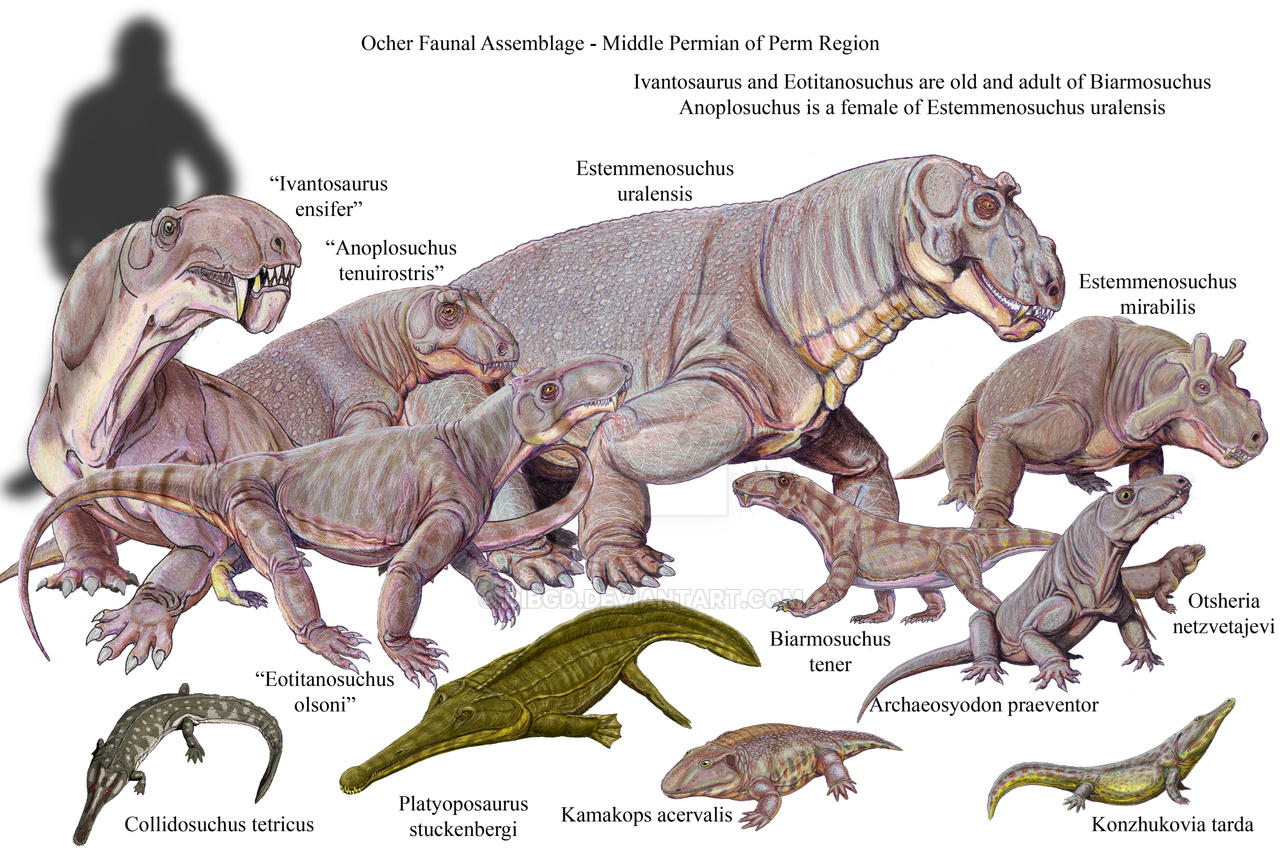Although the words aren't very popular anymore with working scientists, who have embraced the cladistic terminology like a bad fad, it represents the turnover from pelycosaurs to early therapsids, and was a revolutionary thing to have happened, even if Bakker is wrong and the early therapsids weren't warm-blooded (although they probably were.) It was a major shift in the fauna towards the development of mammals, and would be followed by further shifts into more advanced therapsid groups until true mammals finally appeared—right about the same time true dinosaurs appeared in a rival lineage—in the Middle to Late Triassic many millions of years ahead of Estemmenosuchus. But our buddy for this week was an important goal-post to be crossed on the way there.
Estemmenosuchus was a relatively large animal; the largest of the two species could reach lengths of nearly 15 feet, even though it was a sprawl-legged, short-tailed critter. It was probably fairly bulky, and would have weighed nearly as much as a hippo or rhino. The smaller species is more like the size of a large pig or tapir. It's believed to be a herbivore that lived in the floodplains drained by rivers running from the relatively newly raised (and therefore sharper and taller) Ural Mountains. Estemmenosuchus is famous for it's moose antler-like headgear, as shown in the pictures attached, but it's also famous because good skin impressions are found associated with it. This means that it provides evidence of a kind that even other, more primitive therapsids do not (for that matter, we rarely have this kind of evidence for more advanced therapsids either.) Curiously, this skin is not scaled at all, nor is it hairy, but evidence shows that the skin was highly glandularized. This would suggest that its lack of hair might be an adaptation to its relatively large size and warm climate (i.e., rhinos, hippos and elephants are all almost completely hairless today too) but that it is skin that is already prepared to deal with hair and warm-bloodedness.
If this is all actually true, which it appears circumstantially that it well may be, then Estemmenosuchus is part of one of the very first terrestrial faunal assemblages that could be called truly "modern", albeit extremely primitive for a modern assemblage.
Estemmenosuchus was associated with Eotitanosuchus and may in fact have been frequent prey of that animal as well as the myserious "Ivantosaurus ensifer"—a very large carnivorous primitive therapsid who is believed to be a large representative of either Eotitanosuchus or maybe Biarmosuchus tener. The whole faunal assemblage, as illustrated by a Russian paleoartist, is shown below:
As you can clearly see, the smaller Estemmenosuchus species has by far the more elaborate headgear. These animals were replaced as large herbivores in the next faunal assemblages by tapinocephalians such as Ulemosaurus and the South African Karoo version, Moschops.
Although these large-bodied sprawling therapsids, living among primitive archosaurian fake crocodiles and gigantic amphibians and primitive tree ferns, club mosses and other strange plants are, as I said, a "modern" fauna in the sense that it represents probably warm-blooded megafauna, it is still extremely primitive; only one faunal assemblage is more primitive in the Russian fossil record; and it has a close relative, Parabradysaurus present therein.





No comments:
Post a Comment